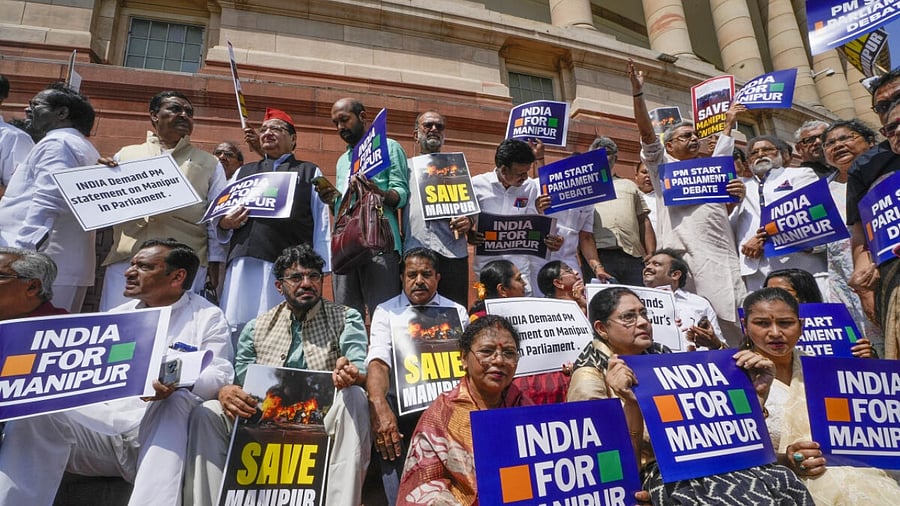
The new Opposition alliance, I.N.D.I.A, has enough odds ranged against it: the Prime Minister’s larger than life image; the Bharatiya Janata Party (BJP)’s huge cadre, and the advantages that any ruling party enjoys in a national election.
However, perhaps the biggest of these odds, or, the one advantage which acts as a multiplying force for the BJP’s other strengths, are the way donations pour into its coffers.
The latest report by the Association of Democratic Reforms (ADR) shows that from 2016 till 2022, the BJP received three times the amount of donations than all the other national parties combined, both as electoral bonds and direct corporate donations.
About Rs 5,300 crore went to the BJP in the form of electoral bonds; the amount that the other parties got was about Rs 1,800 crore.
Yet, these crores made up just 52 per cent of the BJP’s resources. For the other parties, they constituted almost the bulk of their funding: ranging between 61.54 per cent for the Congress to 93.27 per cent for the Trinamool Congress.
The 2024 Lok Sabha election is crucial for parties that have combined to form the I.N.D.I.A alliance. Even if they don’t win, they need to limit the BJP’s current overwhelming presence in the Lok Sabha to be able to hold the government accountable, and to effectively oppose new laws that would dilute the people’s rights. But when planning how best to get these results, how much to spend on each constituency, the Opposition will have to keep close track of its budgets.
The ruling BJP, on the other hand, will have no such worry. It can keep aside its entire income from electoral bonds for spending on its candidates, knowing that its coffers will remain half-full.
As everyone knows, electoral bonds, which cost between Rs 1,000 and Rs 1 crore, are an opaque method of political party funding; nobody gets to know who’s donating them. This is why both the Election Commission of India and the Reserve Bank of India (RBI) objected to them when they were introduced in 2017.
The ADR reports show that these bonds remain the favourite method of donating money to parties; and that most parties use these donations for election campaigns.
As citizens, we need to know where the money that a party spends on canvassing our votes comes from. Are these companies that donate these bonds legitimate, or have they been set up only to channel black money into political donations? Are PSUs being forced to donate?
Consider Modi’s 2019 election campaign. Apart from him addressing three-four rallies daily, he was projected as a brand; a biopic was released on him, and for the three months of the campaign, the free Namo TV channel was on every set top box.
All this cost money. Where did this money come from?
The ADR report covers a large period. In 2016, the Narendra Modi government was fairly new. By 2022, the Prime Minister was half-way into his second term. By then the effects of demonetisation, GST, and even Covid-19 and its lockdowns, had hit everyone. Small businesses had been forced to wind up; jobs had shrunk; digitalisation and Aadhaar rules were making the lives of the rural poor miserable. This period also covered the widespread anti-CAA-NRC protests and the year-long protest against the farm laws.
Yet, there was no let-up in the flow of funds to the ruling BJP. In 2017-2018, the crucial year before the general elections, the BJP received 18 times the amount of direct corporate donations that all other parties did. Did the others even stand a chance?
As its unity plans start taking shape, how does the Opposition tackle this huge wall of funds that separates it from the ruling party? There is little likelihood that the sale of electoral bonds will stop; a petition asking the Supreme Court to investigate their functioning has been pending for five years now. The apex court has turned down requests to stop their sale till the petition is disposed of.
The answer lies in how well the Opposition manages to connect with the people. Can it convince them that its models of governance as seen in states ruled by these parties can lead to a life where access to health and food aren’t luxuries? Where homes aren’t bulldozed without notice? Where raped women don’t kill themselves waiting for their rapists to be arrested? Where saffron-clad mobs aren’t allowed to lynch and humiliate whoever displeases them? Where jobs aren’t a mirage?
Reaching out to convince people that life might get slightly easier will also require funds. But more than that, it will require these parties to have a genuine desire to change lives.
(Jyoti Punwani is a senior journalist.)
Disclaimer: The views expressed above are the author's own. They do not necessarily reflect the views of DH.